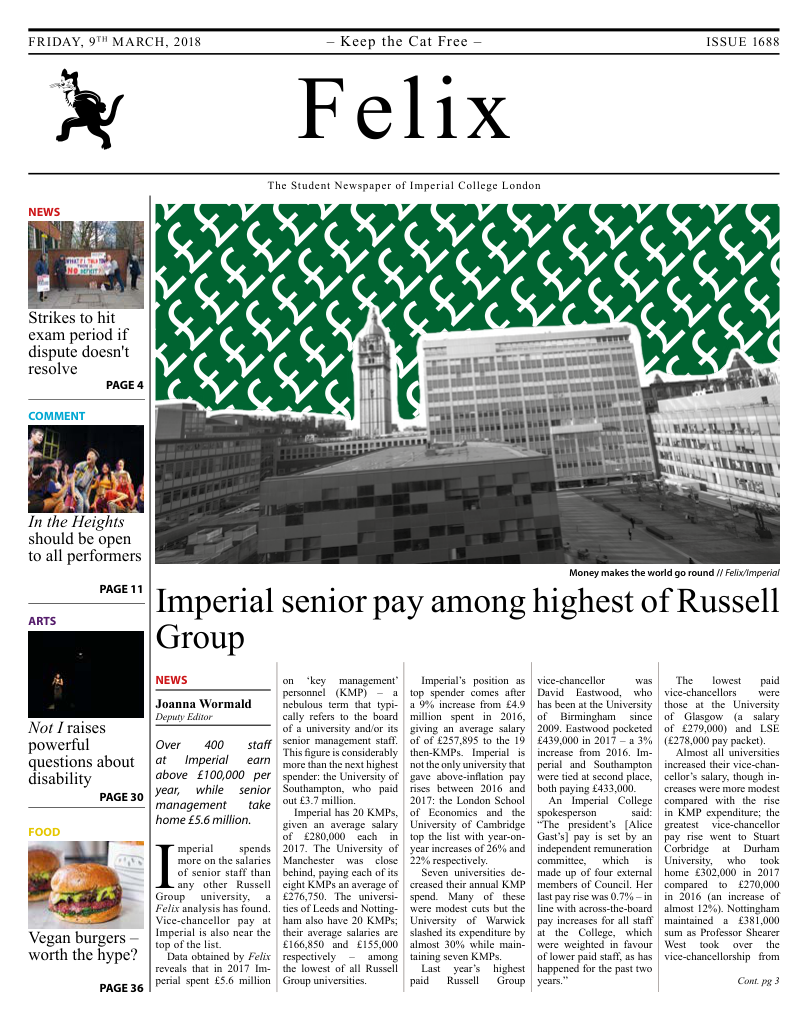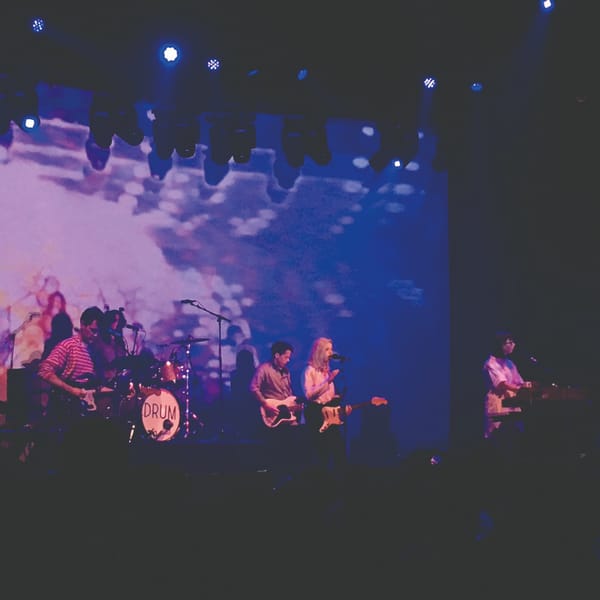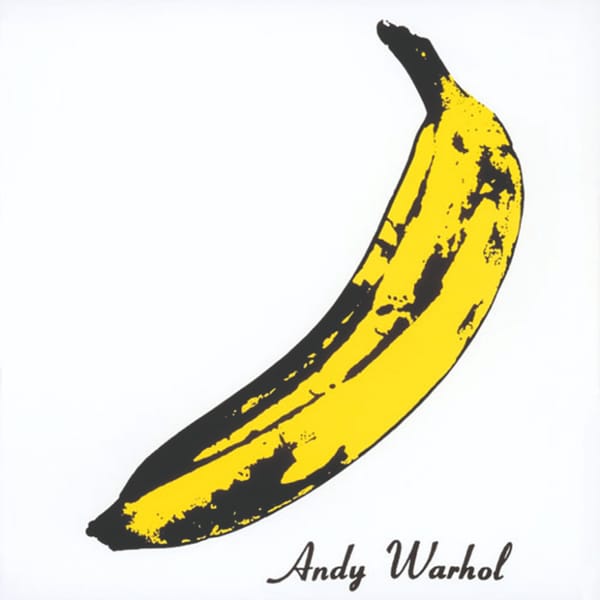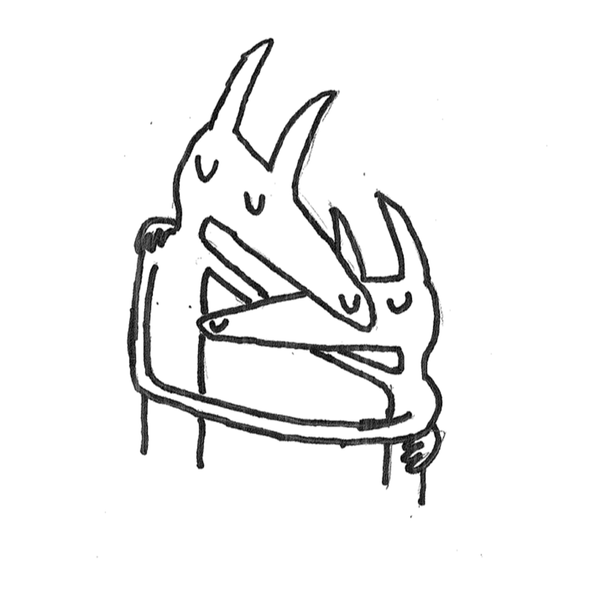A brief, mostly wrong history of punk rock, part II
The saga continues, covering ‘76 to the mid-90s or so. Stay tuned for Part III, where I’ll wrap this shit up.

Welcome to the history of punk rock, part 2. Part 1 was in the last edition of Felix - get caught up online. Now, history.
Anarcho-punk emerged in the UK in the late 70s and early 80s. Crass was one of the foremost bands (“Do they owe us a living? / of course they fucking do!”). Bands like The Mob and Chumbawamba lived in communes and advocated for an anarchist alternative. The subgenre peaked when Crass songs were quoted against Thatcher in Parliament, with regards to the Falklands war. This, along with an attempted prosecution by a Tory MP for obscenity, prompted them to call it quits. The band briefly reunited in 2011 for The Last Supper, which featured a rendition of “Do They Owe Us A Living?” in the original drums-and-vocals style.
Meanwhile, US punk diverged. This was the era of hardcore.
Inspired by John McLaughlin and Chick Corea, Mind Control was formed in 1976 as a jazz-fusion ensemble. Exposed to punk in the closing years of the decade, the band recast itself as Bad Brains and began tearing up the DC area with blisteringly fast beats and gritty waves of reggae-inspired, distorted skanking.
The DC scene was huge. Minor Threat, The Untouchables, Government Issue, Gray Matter, and Dag Nasty all hail from the area. So does Henry Rollins, who grew up in the area and joined Black Flag in 1981 (which later relocated to the west coast).
The west coast was host to a slew of other acts – the Descendents, The Dead Kennedys, The Circle Jerks, The Germs, Reagan Youth, and Suicidal Tendencies (for whom Thundercat used to play bass) – ‘California Uber Alles’, in the words of the Dead Kennedys. The Kennedys are known for political raunch (‘Holiday in Cambodia’, ‘Kill the Poor’, ‘Nazi Punks Fuck Off’, and so on). The Descendents had a more melodic style (Milo Goes to College is their greatest work – named for the lead singer returning to school for a PhD in chemistry).
There was a spattering about the country – Adrenalin O.D. from New Jersey, Reagan Youth (c.f. Hitler Youth) from New York, and so on. Hardcore came to define the American punk rock sound, and its descendents are readily visible in the contemporary scene.
Perhaps the most notorious member of the scene was GG Allin, who promised yearly to kill himself live on Halloween (he was always in jail, and OD’d on heroin before he could). His antics included nudity, eating and rolling in his own faeces, and violence; his concerts were usually cut short by irate venues. He also put out some great spoken-word albums. RIP GG, you maniac.
The sister genre to hardcore was skate punk, and that was filled up by the likes of Bad Religion and NOFX. Bad Religion’s songs are easily identified by the “oozin’ ahhs,” soaring three-part vocal harmonies over their riffs (their big experimental albums were Recipe for Hate and Generator – give ‘em a listen), and a big focus on religion; having come of age during a time of exceptional zealotry in American culture, the anti-religion take was controversial, raw, and perfect for the punk rock scene. NOFX, on the other hand, wrote album after album of ridiculous wordplay (see their seminal album Punk in Drublic, or one of my favorite albums, Pump Up The Valium, featuring hits like ‘My Vagina’, ‘Pharmacist’s Daughter’, and ‘Herojuana’). As a side note, check out the credits on Drublic: “Fat Mike - double chin; Eric Melvin – dreads; El Hefe – talent; Erik Sandin – tattoos.”
The third wave of ska arose around this time. Green Day’s first gig as came in 1987 in Berkeley, at the album launch party for Energy, the debut from (and only album by) Operation Ivy. Ivy was named after the nuclear tests, and played with a skanked guitar sound that slayed – that album is jam-packed with frenetic energy. Energy became one of the defining albums of the ska-punk scene, and had a massive influence on future Californian acts like Sublime. The Mighty Mighty Bosstones of Boston and the Voodoo Glow Skulls of Riverside, California were among the first to the ska party. Continuing into the 90s, Gwen Stefani and No Doubt became big - as did Reel Big Fish, Sublime, Less Than Jake, and Rancid (formed with half of the Op Ivy crew). RBF is particularly well-known for their peppy songs and biting lyricism : “I’ve got a funny feeling / we’re all born to lose / and I’ve got a funny feeling / that this life ain’t worth living.” Sublime takes a generally more mellow line, but turns up the punk when appropriate. 40 Oz. to Freedom is a seminal album (‘Smoke Two Joints’ and the title track stand out, plus a Bad Religion cover, ‘We’re Only Gonna Die From Our Own Arrogance’), as is their self-titled album (‘Santeria’, ‘What I Got’, ‘Under My Voodoo’). Sadly, frontman Brad Nowell died of a heroin overdose in ‘96, before Sublime became known and loved worldwide.
Catch-22 evolved out of this scene, releasing their debut, Keasbey Nights, in 1998, when singer-guitarist Tomas Kalnoky was 18. Kalnoky, after university, founded Streetlight Manifesto, and Bandits of the Acoustic Revolution, which continue to work in the ska genre; as on one of the tunes from Keasbey, people often refer to SLM as “fourth wave,” though no such wave has properly occurred.
Well, that’s all the space I got. See y’all next week.









